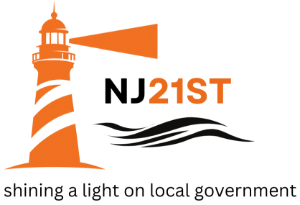The Berkeley Heights Township’s lease of the lower Columbia field has been approved, but there is much to be done before residents will see a playing field at this location. One of those things needs to be a review of environmental conditions in that area and how placing a turf field in this location will impact the ecosystem. According to this map found on the Township’s website (as well as other documentation), the wooded area adjacent to the field is wetlands. Additionally, the 50 foot and 150 foot buffers appear to extend well into the field area.
There is an assumption on the part of the Township that they will get approval for a turf field, and that may not actually happen. However, if it does, residents should be asking whether turf is the right choice for this location. Turf, when properly installed and maintained is more expensive than grass. There are advantages to turf that could outweigh the expense, if money were the only concern.
It isn’t.
Artificial turf, when used for athletic purposes, requires replacement after approximately 10 years. The materials are not easily recycled, when they can be recycled at all, so there is a large overall impact to the environment. There is even more cause for concern much closer to home, literally. Bits of infill, typically rubber granules, and pieces of plastic grass migrate and can contaminate the wetlands and stream that border the field. If that’s still not enough of a concern, sweat, hair, skin, blood, bird droppings and animal feces that would ordinarily be broken down and neutralized by microbes in the soil will be trapped by synthetic turf. The Synthetic Turf Council suggests the installation of a manual or automatic irrigation system with artificial turf to improve field sanitation and to make it more comfortable for players in warmer climates. This leads right back to toxic materials poisoning the wetlands and affecting aquatic life both in the stream and downstream to the Passaic River.
Artificial turf is hotter than grass, contributing to urban heat issues. Synthetic turf is 20 to 50 degrees (Fahrenheit) warmer than grass, and can reach temperatures that equal asphalt. Caution needs to be taken to minimize heat-related illnesses. Efforts to reduce the surface temperature of synthetic turf have had limited success.
Artificial turf covers soil and compacts it so that living organisms can’t survive underneath. Even when turf is removed, a lot work needs to be done before the soil is capable of sustaining life and plant growth.
As Berkeley Heights Township and the Recreation Department moves forward with this project, residents should be aware of the impact a synthetic field will create. Artificial turf should be fully studied, and residents should also stay involved so that if the township does move forward with an artificial turf field, every effort is being made to minimize environmental harm.
Read More About the CMS Lease Agreement
Subscribe to BHCW For Free
Support & Stay Informed
NJ21st is powered by facts, not special interests. If our reporting helped you stay informed, consider making a contribution and subscribing to get new coverage delivered directly to your inbox.
Contribute Today



